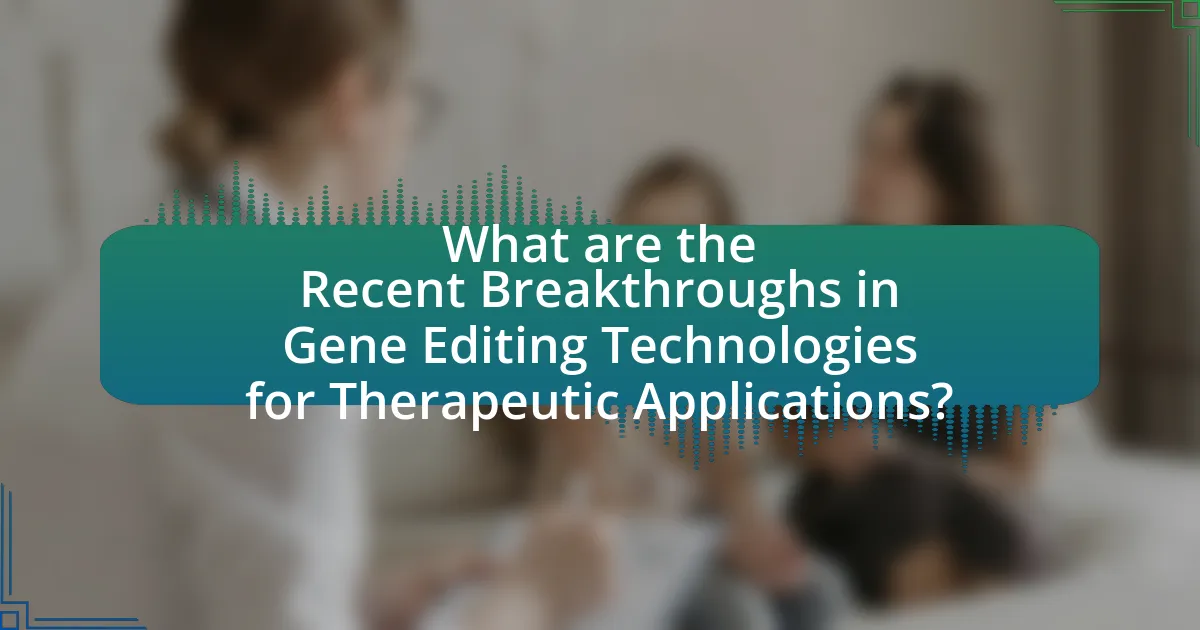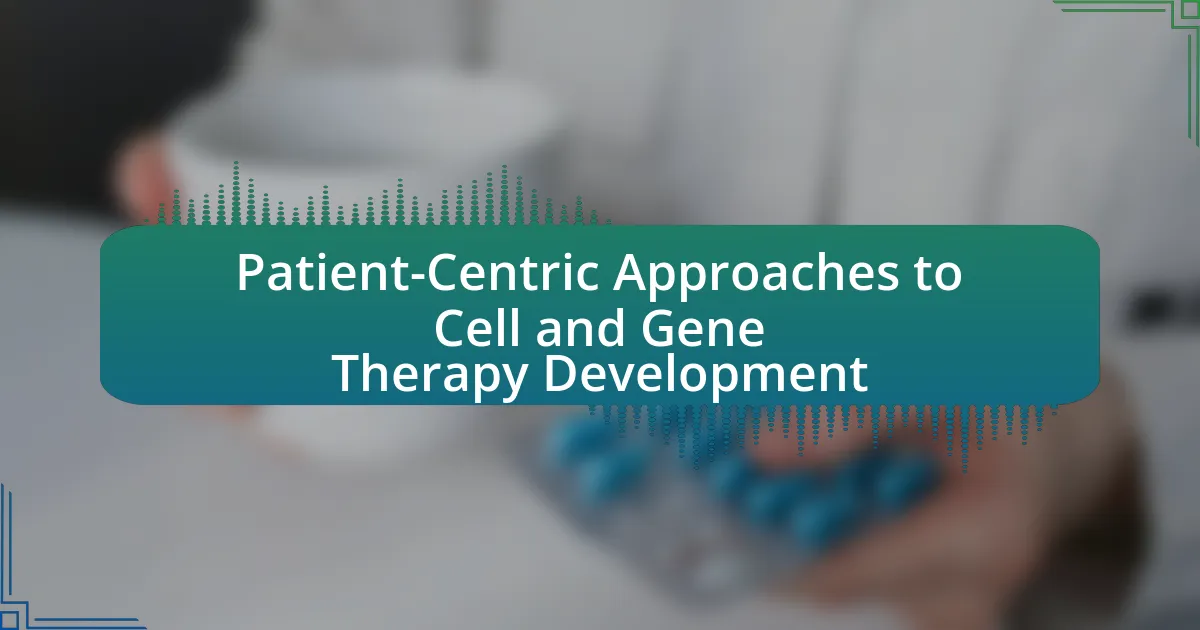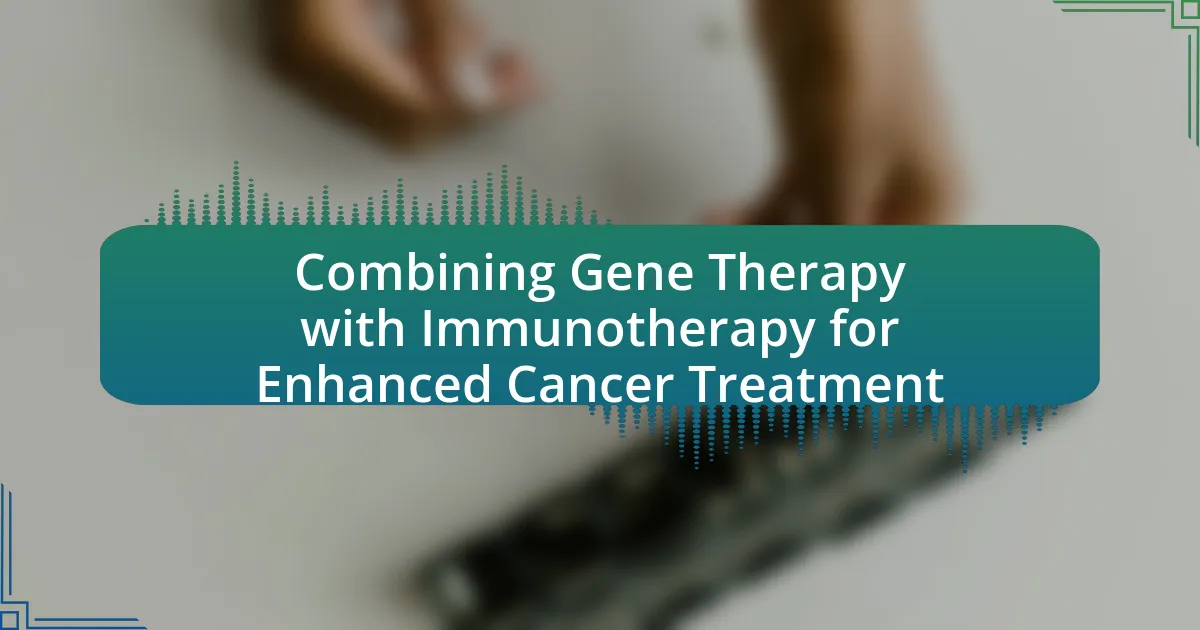Recent breakthroughs in gene editing technologies, particularly CRISPR-Cas9, base editing, and prime editing, have significantly advanced therapeutic applications by enhancing precision and reducing off-target effects. These technologies enable targeted modifications to the genome, offering potential treatments for genetic disorders such as sickle cell disease and muscular dystrophy. The article explores the implications of these advancements for patient outcomes, ongoing research, and the challenges related to ethical considerations and regulatory frameworks. Additionally, it highlights the practical implications for healthcare professionals and outlines best practices for implementing gene editing therapies.

What are the Recent Breakthroughs in Gene Editing Technologies for Therapeutic Applications?
Recent breakthroughs in gene editing technologies for therapeutic applications include advancements in CRISPR-Cas9, base editing, and prime editing. CRISPR-Cas9 has been refined to improve precision and reduce off-target effects, making it more suitable for clinical applications. For instance, a study published in Nature in 2020 demonstrated enhanced specificity in CRISPR-Cas9, which significantly minimizes unintended genetic alterations. Base editing, introduced in 2016, allows for the direct conversion of one DNA base into another without causing double-strand breaks, offering a safer alternative for correcting genetic mutations. Research published in Science in 2021 highlighted its successful application in treating genetic disorders like sickle cell disease. Prime editing, developed in 2019, enables more versatile and accurate edits by allowing the insertion, deletion, or replacement of DNA sequences with high fidelity. A 2021 study in Nature Biotechnology showcased its potential in correcting a wide range of genetic diseases, further solidifying its therapeutic promise. These advancements collectively enhance the efficacy and safety of gene editing for therapeutic purposes.
How have these breakthroughs changed the landscape of gene editing?
Recent breakthroughs in gene editing, particularly the development of CRISPR-Cas9 and base editing technologies, have significantly transformed the landscape of gene editing by enhancing precision, efficiency, and accessibility. These advancements allow for targeted modifications at the genetic level with minimal off-target effects, which is crucial for therapeutic applications. For instance, CRISPR-Cas9 has been utilized in clinical trials for conditions like sickle cell disease and beta-thalassemia, demonstrating its potential to correct genetic mutations effectively. Additionally, base editing, which enables the conversion of one DNA base into another without causing double-strand breaks, has expanded the range of treatable genetic disorders. The increased ease of use and lower costs associated with these technologies have democratized gene editing research, enabling more laboratories and institutions to participate in therapeutic development.
What specific technologies have emerged recently in gene editing?
Recent advancements in gene editing include CRISPR-Cas9 variations, such as CRISPR-Cas12 and CRISPR-Cas13, which enhance precision and reduce off-target effects. Additionally, base editing and prime editing have emerged, allowing for more accurate modifications at the DNA level without double-strand breaks. These technologies have been validated through studies demonstrating their effectiveness in correcting genetic mutations associated with diseases, such as sickle cell anemia and muscular dystrophy, showcasing their potential for therapeutic applications.
How do these technologies differ from previous methods?
Recent breakthroughs in gene editing technologies, such as CRISPR-Cas9 and base editing, differ from previous methods by offering greater precision, efficiency, and versatility in modifying genetic material. Unlike traditional techniques, which often relied on random integration of DNA and were limited in their ability to target specific genes, these new technologies enable targeted edits at specific locations in the genome with minimal off-target effects. For instance, CRISPR-Cas9 can create double-strand breaks at precise sites, allowing for accurate gene insertion or deletion, while base editing allows for the conversion of one DNA base pair into another without causing double-strand breaks. These advancements significantly enhance the potential for therapeutic applications, as evidenced by successful trials in treating genetic disorders, which were not feasible with earlier methods.
Why are these breakthroughs significant for therapeutic applications?
Recent breakthroughs in gene editing technologies are significant for therapeutic applications because they enable precise modifications to the genome, which can lead to effective treatments for genetic disorders. For instance, CRISPR-Cas9 technology allows for targeted gene corrections, potentially curing conditions like sickle cell disease and muscular dystrophy. Studies have shown that these advancements can improve the efficacy of therapies, as demonstrated by clinical trials where patients experienced significant health improvements after gene editing interventions. This precision reduces off-target effects and enhances the safety profile of treatments, making them more viable for widespread clinical use.
What diseases or conditions can be targeted with these advancements?
Recent advancements in gene editing technologies can target a variety of diseases and conditions, including genetic disorders, certain types of cancer, and infectious diseases. For instance, conditions like cystic fibrosis, sickle cell anemia, and muscular dystrophy are being addressed through gene editing techniques such as CRISPR-Cas9, which allows for precise modifications to the genome. Additionally, gene editing has shown promise in targeting specific cancer mutations, enabling personalized treatment approaches. Research has demonstrated that these technologies can effectively modify genes associated with these diseases, leading to potential therapeutic applications and improved patient outcomes.
How do these breakthroughs improve patient outcomes?
Recent breakthroughs in gene editing technologies, such as CRISPR-Cas9, significantly improve patient outcomes by enabling precise modifications to genetic material, which can correct mutations responsible for various diseases. These advancements allow for targeted therapies that can effectively treat conditions like sickle cell anemia and certain types of cancer, leading to higher rates of remission and improved quality of life. For instance, clinical trials have demonstrated that patients with sickle cell disease who received CRISPR-based treatments showed a substantial reduction in symptoms and complications, highlighting the potential of these technologies to transform treatment paradigms and enhance overall patient health.
What challenges remain in the implementation of these technologies?
The challenges that remain in the implementation of gene editing technologies for therapeutic applications include ethical concerns, regulatory hurdles, and technical limitations. Ethical concerns arise from the potential for unintended consequences, such as off-target effects, which can lead to harmful mutations. Regulatory hurdles are significant, as the approval processes for new therapies can be lengthy and complex, often requiring extensive clinical trials to ensure safety and efficacy. Technical limitations also persist, including difficulties in delivering gene editing tools effectively to target cells and ensuring stable integration of edited genes. These challenges hinder the widespread adoption and application of gene editing technologies in clinical settings.
What ethical considerations are associated with gene editing?
Ethical considerations associated with gene editing include concerns about safety, consent, equity, and the potential for unintended consequences. Safety issues arise from the risk of off-target effects, where unintended parts of the genome may be altered, potentially leading to harmful outcomes. Consent is critical, especially when editing germline cells that affect future generations, raising questions about the rights of individuals who cannot consent. Equity concerns highlight the risk of exacerbating social inequalities, as access to gene editing technologies may be limited to wealthier populations. Additionally, the potential for “designer babies” raises moral questions about the extent to which humans should intervene in natural processes. These considerations are underscored by ongoing debates in bioethics and regulatory frameworks, emphasizing the need for responsible governance in gene editing practices.
How do regulatory frameworks impact the use of these technologies?
Regulatory frameworks significantly influence the use of gene editing technologies by establishing guidelines that govern their development, testing, and application. These frameworks ensure that gene editing practices adhere to safety, ethical, and efficacy standards, which can either facilitate or hinder innovation. For instance, the U.S. Food and Drug Administration (FDA) regulates gene therapies under the Federal Food, Drug, and Cosmetic Act, requiring extensive clinical trials to demonstrate safety and effectiveness before approval. This regulatory oversight can delay the introduction of new therapies but also protects public health by ensuring that only safe and effective treatments reach the market. Additionally, international regulations, such as those from the European Medicines Agency (EMA), can create variations in approval processes, impacting the speed and scope of technology adoption across different regions.
How do recent breakthroughs in gene editing technologies relate to ongoing research?
Recent breakthroughs in gene editing technologies, such as CRISPR-Cas9 and base editing, significantly enhance ongoing research by enabling precise modifications to the genome, which facilitates the study of genetic diseases and the development of targeted therapies. These advancements allow researchers to investigate gene functions more effectively and create animal models that closely mimic human diseases, thereby accelerating the discovery of potential treatments. For instance, a study published in Nature in 2020 demonstrated that CRISPR-Cas9 could be used to correct genetic mutations in mice, leading to improved understanding and potential therapies for conditions like muscular dystrophy. This illustrates how the integration of cutting-edge gene editing techniques is pivotal in advancing therapeutic research and applications.
What future developments can we expect in gene editing for therapeutic applications?
Future developments in gene editing for therapeutic applications will likely include enhanced precision and efficiency through advanced CRISPR technologies, such as CRISPR-Cas9 and CRISPR-Cas12, which are being refined to minimize off-target effects. Research indicates that these technologies are evolving to allow for multiplexed editing, enabling the simultaneous modification of multiple genes, which could significantly improve treatment outcomes for complex diseases like cancer and genetic disorders. Additionally, the integration of artificial intelligence in gene editing design is expected to optimize target selection and predict outcomes more accurately, as evidenced by studies showing AI’s potential in identifying effective guide RNAs. Furthermore, the development of in vivo gene editing techniques, such as lipid nanoparticles for delivering CRISPR components directly to tissues, is anticipated to enhance the safety and efficacy of therapies, as demonstrated in recent animal studies.
What are the practical implications of these breakthroughs for healthcare professionals?
Recent breakthroughs in gene editing technologies, such as CRISPR-Cas9, have significant practical implications for healthcare professionals by enabling precise modifications to genetic material, which can lead to targeted therapies for genetic disorders. These advancements allow healthcare professionals to develop personalized treatment plans based on an individual’s genetic makeup, improving the efficacy of interventions. For instance, studies have shown that CRISPR can effectively correct mutations responsible for conditions like sickle cell disease, potentially transforming patient outcomes. Additionally, these technologies facilitate faster drug development processes, allowing healthcare professionals to bring innovative therapies to market more efficiently, ultimately enhancing patient care and treatment options.
How can healthcare providers stay informed about advancements in gene editing?
Healthcare providers can stay informed about advancements in gene editing by subscribing to reputable scientific journals, attending conferences, and participating in professional organizations focused on genetics and biotechnology. For instance, journals like Nature Biotechnology and The New England Journal of Medicine regularly publish peer-reviewed articles on the latest research and breakthroughs in gene editing. Additionally, conferences such as the Annual Meeting of the American Society of Gene & Cell Therapy provide platforms for networking and learning about cutting-edge developments. Engaging with organizations like the American Society of Human Genetics can also offer resources and updates on advancements in the field.
What best practices should be followed when considering gene editing therapies?
When considering gene editing therapies, best practices include thorough preclinical testing, ethical review, informed consent, and post-treatment monitoring. Preclinical testing ensures safety and efficacy, as demonstrated by studies showing that CRISPR-based therapies require extensive validation before human trials. Ethical review processes, such as those outlined by the National Institutes of Health, help address potential societal implications and risks. Informed consent is crucial, as patients must understand the risks and benefits, supported by guidelines from the World Health Organization. Finally, post-treatment monitoring is essential to track long-term effects and efficacy, as evidenced by ongoing studies in gene therapy that highlight the importance of follow-up care.




